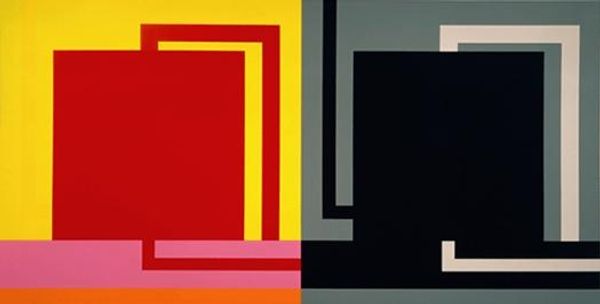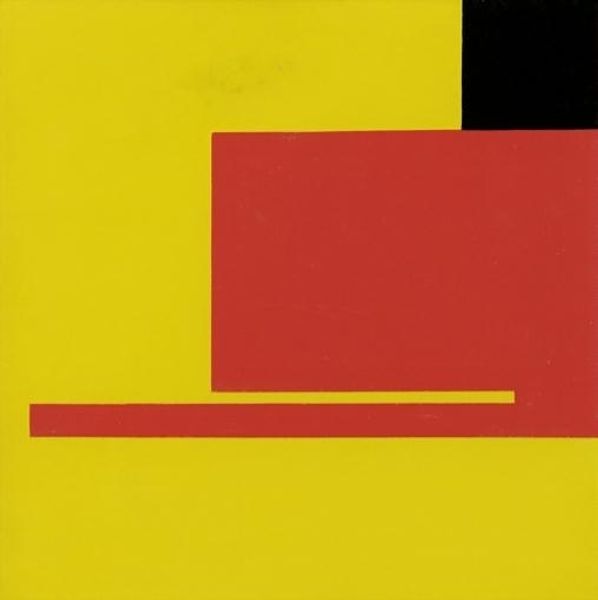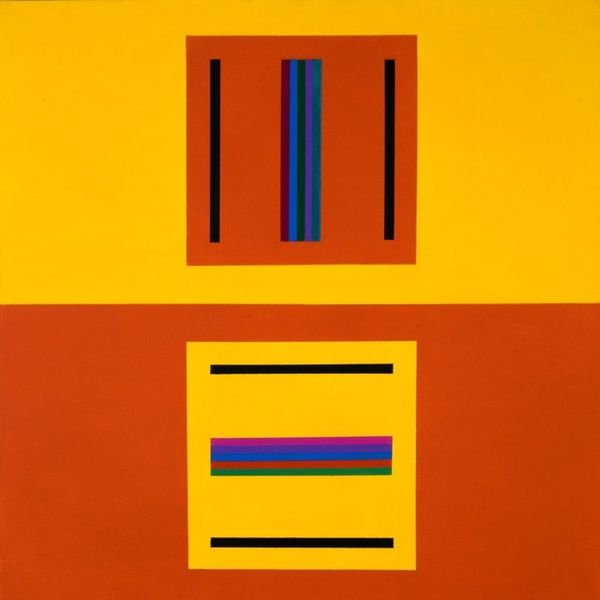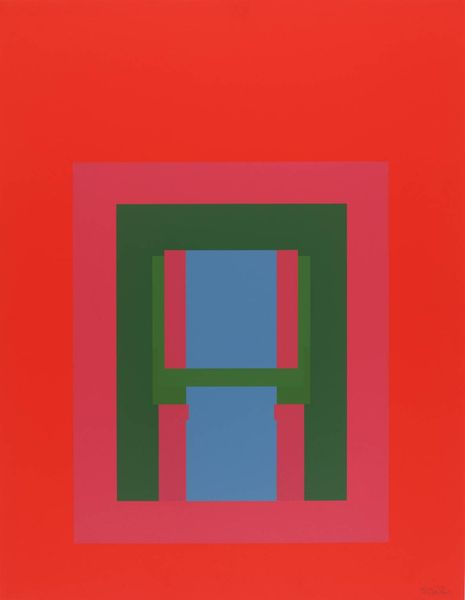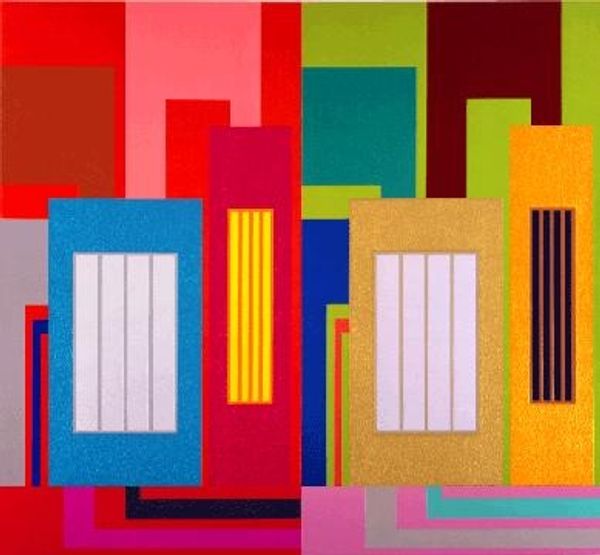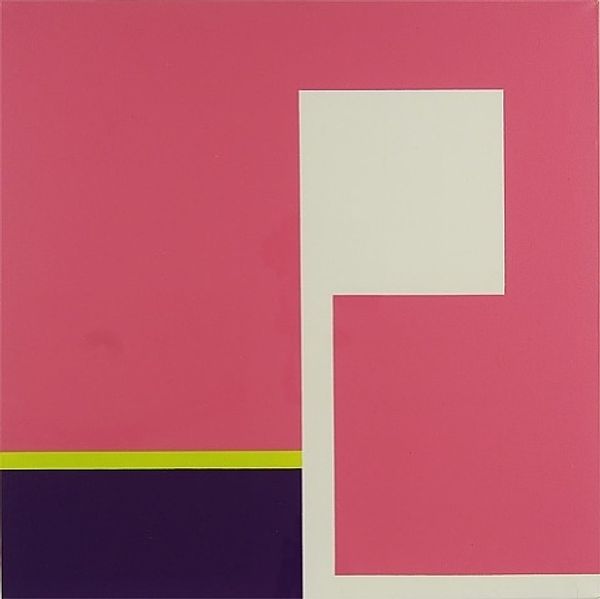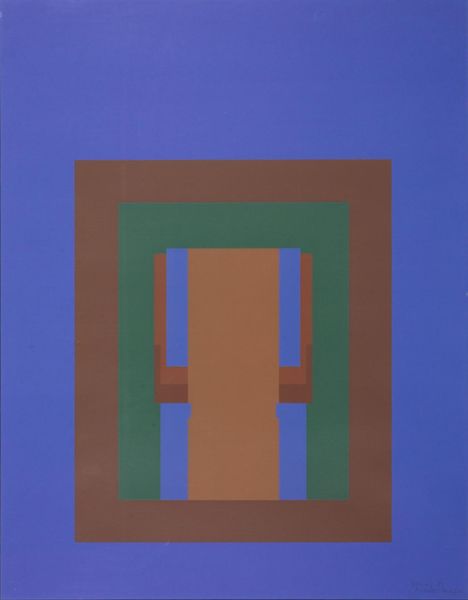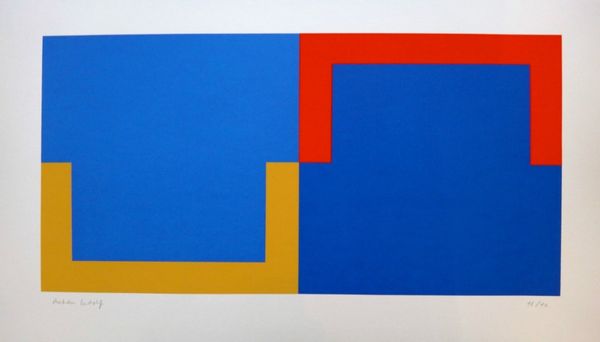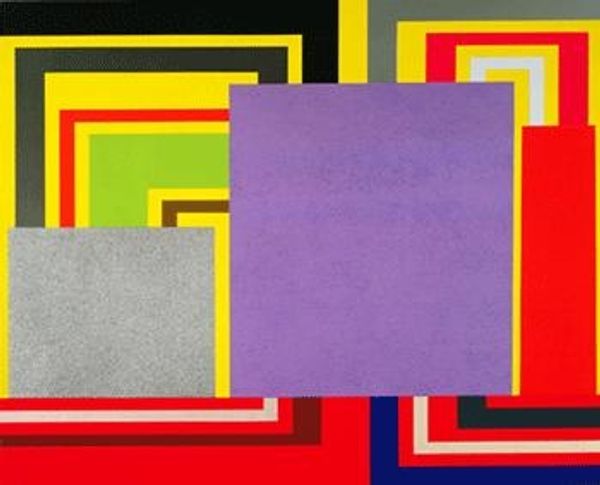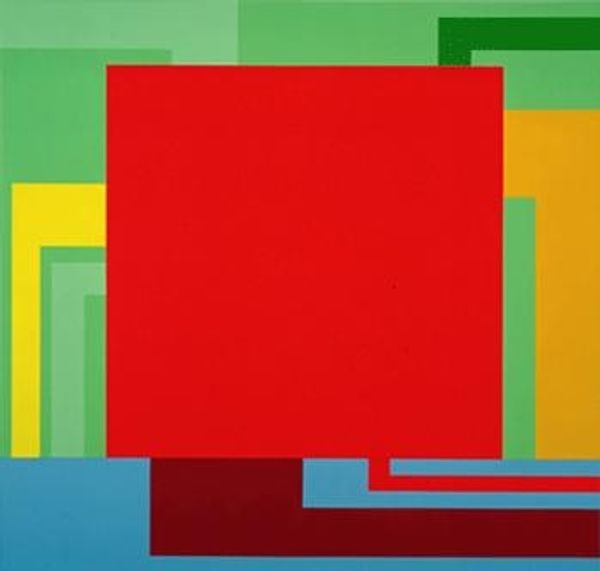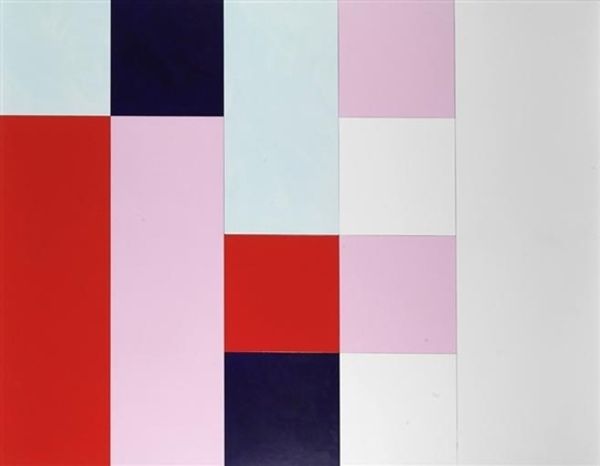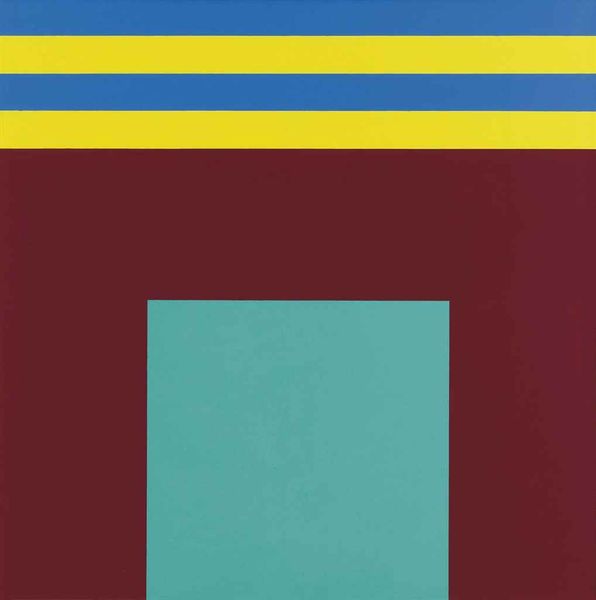
Copyright: Peter Halley,Fair Use
Curator: "Lost in Translation," created in 2004 by Peter Halley. He employed acrylic paint in this geometrically focused artwork. Editor: It strikes me immediately as a strangely detached and sanitized space. There's an odd tension. The flat blocks of color are bold but contained, almost claustrophobic. Curator: Halley came of age in the 1980s. The Neo-Geo movement really comes through in this painting—that interest in geometry as a language for critiquing late capitalism and social structures. You see that containment you mentioned reflected in the formal arrangements. Editor: Ah, yes. The prison cell motif he’s known for comes to mind. The rectangles, the connections implied but never actually made… It's as though everything is disconnected but meant to be linked somehow, a feeling of systems failing. It also brings in echoes of Pop Art with these flat surfaces and artificial feeling colors. Curator: Indeed. Color is central to understanding Halley’s symbolism here. His juxtapositions aren't arbitrary. The brighter colors against the greys – like those in the “cell” motif on the left -- create jarring contrasts that symbolize alienation. Red usually means something connected with vitality or urgency, but is juxtaposed to other dull tones. A tension emerges in the image, like an off-key vibration. Editor: Exactly! This almost playful deployment of bright color hints at something far more cynical underneath. The clean, almost clinical application enhances that reading. There’s very little painterly gesture; it all seems quite mechanical, reproducible, reflecting consumer culture’s pervasive influence. Curator: I agree. And look closely: that sense of division doesn't just speak to physical or social separations, but also how information and communication, in our technologically saturated environment, paradoxically create more confusion than clarity. Hence, “Lost in Translation”. Editor: It makes you consider how we negotiate this abstract world of screens and connections and perhaps more accurately, the ways we don't successfully negotiate them. Thanks to works like this one by Halley, we keep reflecting on the language and feeling of geometry.
Comments
No comments
Be the first to comment and join the conversation on the ultimate creative platform.
